- Author
- Clemens, Major W. F. M. MC.
- Subjects
- WWII operations
- Tags
-
- RAN Ships
- None noted.
- Publication
- September 1974 edition of the Naval Historical Review (all rights reserved)
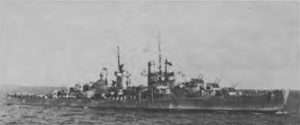
All was bustle and activity in Canberra. Ships ahead were reported, and messages were received from Patterson, also. Lt. Cdr. Wight was endeavouring to load guns, the Torpedo Officer was trying to get torpedoes off, Lt. Cdr. Mesley was trying to con the ship and avoid torpedoes to either side. She was then hit by two or three salvoes, and probably by two torpedoes on the starboard side (says Crutchley, but not the official enquiry). However, 24 main battery hits were sufficient to stop her in the water, hit from just before the port beam to fine on the starboard quarter, listing eight degrees to starboard, blazing amidships, with many fires burning between decks. Captain Gitting was mortally wounded, and the Commander, Cdr. J. A. Walsh, also wounded, eventually got up from amidships and took over. She only got off 3 or 4 4 in. rounds before power and propulsion died. In less than four minutes she was out of the war.
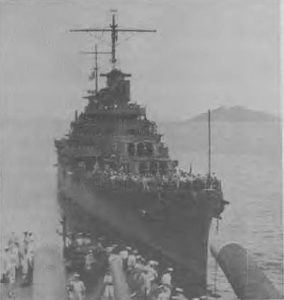
At 0149 flares blossomed over the American ships, remorseless searchlights picked them out, and less than two minutes later 8 in. salvoes were slashing into them. Within six minutes Astoria was hit by torpedoes and was burning. Japanese gunners pumped hundreds of rounds into her as she staggered off to the southeast. However, she still fought, and was able to smash a turret on Chokai with her last salvo.
About this time, Aoba’s searchlight picked up Quincy with her turrets trained fore and aft. Seconds later an 8 in. salvo blew one of her planes off the catapult, and she was fully illuminated. The Japanese ‘continued the battle very easy minded, without any worries’. Engulfed in fire, deluged with shells, her guns were manned and still firing. In fact, they got off 21 8 in. rounds before a torpedo ploughed into No. 4 fireroom and a turret exploded; her bridge was wrecked and her Captain killed. A few hits had been registered, one of the last fired by her main battery landing near the flag bridge of Chokai, and destroying the flag operations room with 30 officers and men essential to the control of the battle. Quincy started to go down by the bow, and sank at 0235.
Meanwhile, Kako had illuminated Vincennes. Again one of the first Japanese salvoes hit aft where scout planes rested on catapults. Again flames leapt into the air, and again shells and torpedoes found their targets. She sustained three or four torpedo hits, and was in her final agony when the Japanese ceased firing at 0215, and she too went down half an hour later. This round had lasted a few minutes longer than the first, but the results were identical. They were surprised, and smashed before they had a chance to respond.
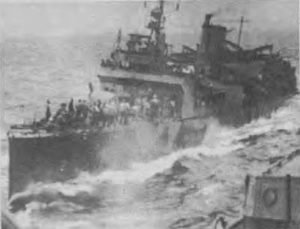
Ralph Talbot had picked up Patterson’s warning, and had steamed south at 25 knots and seen something of the battle. At 0215 Tenryu focused a searchlight on her and shells began to come her way. All three Japanese opened at 4,500 to 6,000 and scored a hit on her torpedo tubes. Cdr. Callaghan, incredibly noting coloured splashes like American shells, thought he was being fired on by friends, flicked on recognition lights, and shouted his identification by radio. This caused the Japanese to pause, but only momentarily. Vubari illuminated and fired again. She sustained four solid hits from fore and aft, but got off four torpedoes without success. She then entered a rain squall, and the battle ended abruptly. She had a list of 20° to starboard, and was in flames. Ralph Talbot’s plucky fight may have influenced Mikawa that there were more ships than he had seen. She made it to Tulagi next day, after offering others assistance and, temporarily patched up, made it to Australia for repairs.
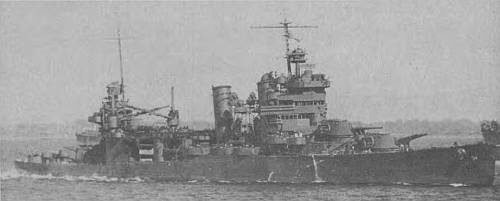
Admiral Mikawa, fearing air attack at dawn, fanned out, but no allied planes appeared. After consulting the captains he reckoned they had sunk seven cruisers and five destroyers – more than were present. His own damage was trifling. Aoba torpedo hit and burnt, and another fire, a chart room on Chokai wiped out, and a turret damaged, a storeroom in Kinugasa flooded by a shell hole, hits in No. 1 engine room, and damage to port steering control room, one of Kako’s planes and crew lost, 58 men killed, 53 wounded. No wonder the little people thought their navy invincible. They had not heard about Midway.

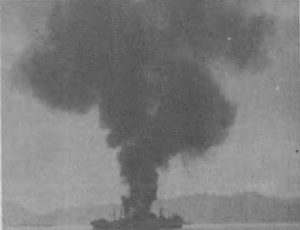
However, the Allies did have a little kick, for Kako diverted with the rest of Cru Div 6 to Kavieng and was observed by a small 17- year-old submarine USS 44 (Lt. Cdr. John Moore) who promptly launched four torpedoes which hit Kako, which buckled and sank in five minutes.
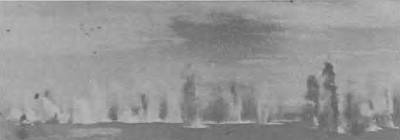
Savo could not be called a decisive battle, although it might have been if the Japanese had followed it with energy instead of committing forces piecemeal. They were mistaken to fight on a New Guinea front as well as the Solomons. It was the inaugural engagement of a bloody and desperate campaign which I shared with General Vandegrift and his Marines, and 9th August only the first of many terrible days to come when commanders on either side might well have raised their hands to Heaven, like the Psalmist, to cry out ‘For all the day long have I been plagued, and chastened every morning‘.




